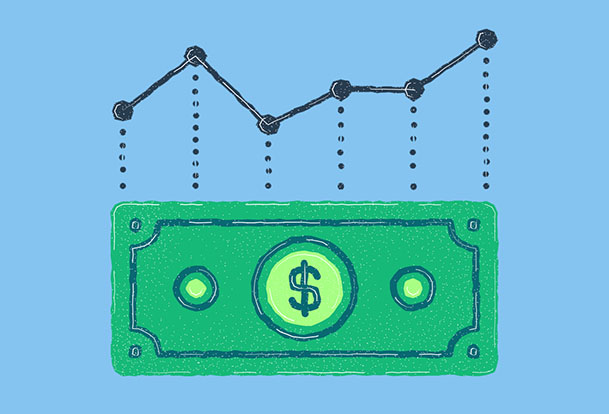Financial Considerations for Retirees
Published on August 17, 2020
minute read
Share:
You’ve worked hard to build up your savings, and now you’re ready to step into your dream retirement. There are a number of considerations you need to take into account when it comes to determining how and when to access your hard-earned nest egg. A little planning before you’re ready to retire goes a long way.
Withdrawals from savings
Start by looking at the big picture. If your retirement savings are spread across different types of accounts you’ll need to understand the rules and implications that apply to making withdrawals from each type of account.
Tax-Free Savings Accounts
A tax-free savings account (TFSA) is a great investment vehicle for both short and long-term savings. Funds can be withdrawn at any time during the year and may be re-contributed the following calendar year. And since the funds deposited into your TFSA have already been taxed at the time of contribution, there are no tax implications at the time of the withdrawal.
Registered Retirement Savings Plans
Another way to get quick access to funds is to withdraw from your registered retirement savings plan (RRSP). In this case however, taxes are automatically withheld. The specific amount depends on your province of residence and the sum withdrawn.
If your retirement savings are spread across different types of accounts you’ll need to understand the rules and implications that apply to making withdrawals from each type of account.
Registered retirement income funds
If you plan to withdraw funds from your RRSP on a regular basis, you may want to consider a retirement income fund (RIF). Canadians are required to convert their existing RRSPs to a source of retirement income by the end of the year in which they reach the age of 71, and start making regular withdrawals starting the next year. Note that you can convert to a RIF at any time prior to age 71 if this makes sense for you. The benefit here is that a minimum amount for withdrawal will be determined based on your age and will not be subject to withholding taxes, although this will have to be reported as income for that calendar year.
Locked-in retirement accounts
Another account you may have is a Locked-In Retirement Account (LIRA), typically obtained through employee pension plans. They are very similar to RRSPs but do not normally allow you to withdraw. If need be there are some ways of “unlocking” these funds under special circumstances, but these options should be discussed with a professional. Similar to RRSPs and RIFs, LIRAs must be converted to a life income fund (LIF) by the end of year in which you reach age 71. In contrast to RIFs there is a maximum amount allowed for withdrawals every year, subject to taxes withheld for the amount above the minimum amount.
Investment accounts
Many investors opt for a regular investment account. This non-registered account is great for short-term needs as well as regular withdrawals. It is easy to make a one-time withdrawal or to set up automatic withdrawals to take specific amounts out on a regular basis. Note that this is a fully taxable account where interest, dividends and capital gains are not tax sheltered.
Taxes
Tax planning is essential to a retirement income strategy, primarily because you may be generating more of your income from personal savings and investment distributions that are taxed at different rates. This can have a significant impact on the after-tax dollars available in retirement.
With careful planning, you may be able to reduce or defer taxes. Strategies to produce the income you need in the most tax-efficient manner may include a focus on tax-preferred income sources such as dividends and capital gains, the use of income-splitting opportunities or using different types of accounts in the most tax-efficient manner.
With careful planning, you may be able to reduce or defer taxes.
Investment costs
All investment products have management fees and operating costs, whether you’re paying a commission for a stock trade or a management expense ratio (MER) to a mutual fund operator. Some also charge fees for added features such as guaranteed income payments or principal protection.
Costs matter because they always reduce the return on your investment portfolio. Principal and income guarantees may be appropriate if these features deliver the right solution for your specific needs. But there's always a trade-off. In this case, the high cost of guarantees reduces growth potential over the long term.
Even among similar investment products, fees can vary dramatically. It pays to keep a close eye on your investment costs because a difference as small as 1% per year can have a significant effect. Simply put, low-cost investments will help you get more out of your portfolio and possibly more out of your retirement.
Longevity
Thanks to improving lifestyles and health care, people are living longer than ever. Today, a healthy 65-year-old has a good chance of living to age 821. For a healthy couple, both aged 65, there's a strong possibility that at least one spouse will live past 90 years of age2.
Of course, it's impossible to know exactly how long any one person will live in retirement. But it's certainly prudent to plan for a long retirement. In most cases, your retirement income plan should extend for 25 years or more to cover a wide range of possibilities.
Rising prices
Inflation refers to how the cost of goods and services rises over time. In the 1990s and early 2000s, Canada's inflation rate was quite low, usually 1% to 3% per year. In the early 1980s, by comparison, inflation was higher than 10% per year. Based on long-term historical averages, 3% is generally considered a reasonable estimate for future inflation rates.
With annual inflation of 3%, the average price of goods and services doubles every 24 years. To manage this, identify investments with good long-term growth potential to help you outpace inflation.
Health care costs
Your health is your most valuable asset. Unfortunately, the eventual diminishing of health is a reality that everyone should plan for.
At some stage in your life, you may suffer from a critical illness (such as a stroke or heart attack) or you may simply reach a point where you need ongoing care, either in your home or in a long-term care facility. It's important to plan for increased costs related to health care as you age.
There are ways to protect yourself, your spouse and your family from the added costs associated with these situations. A growing number of critical illness and long-term care insurance policies are available for this purpose.
Your retirement might well be your most exciting adventure yet. Mapping out some smart strategies early on will help you enjoy it to the fullest.
The information provided in this article is for general purposes only and does not constitute personal financial advice. Please consult with your own professional advisor to discuss your specific financial and tax needs.
RBC Direct Investing Inc. and Royal Bank of Canada are separate corporate entities which are affiliated. RBC Direct Investing Inc. is a wholly owned subsidiary of Royal Bank of Canada and is a Member of the Canadian Investment Regulatory Organization and the Canadian Investor Protection Fund. Royal Bank of Canada and certain of its issuers are related to RBC Direct Investing Inc. RBC Direct Investing Inc. does not provide investment advice or recommendations regarding the purchase or sale of any securities. Investors are responsible for their own investment decisions. RBC Direct Investing is a business name used by RBC Direct Investing Inc. ® / ™ Trademark(s) of Royal Bank of Canada. RBC and Royal Bank are registered trademarks of Royal Bank of Canada. Used under licence.
© Royal Bank of Canada 2025.
Any information, opinions or views provided in this document, including hyperlinks to the RBC Direct Investing Inc. website or the websites of its affiliates or third parties, are for your general information only, and are not intended to provide legal, investment, financial, accounting, tax or other professional advice. While information presented is believed to be factual and current, its accuracy is not guaranteed and it should not be regarded as a complete analysis of the subjects discussed. All expressions of opinion reflect the judgment of the author(s) as of the date of publication and are subject to change. No endorsement of any third parties or their advice, opinions, information, products or services is expressly given or implied by RBC Direct Investing Inc. or its affiliates. You should consult with your advisor before taking any action based upon the information contained in this document.
Furthermore, the products, services and securities referred to in this publication are only available in Canada and other jurisdictions where they may be legally offered for sale. Information available on the RBC Direct Investing website is intended for access by residents of Canada only, and should not be accessed from any jurisdiction outside Canada.
Inspired Investor brings you personal stories, timely information and expert insights to empower your investment decisions. Visit About Us to find out more.










